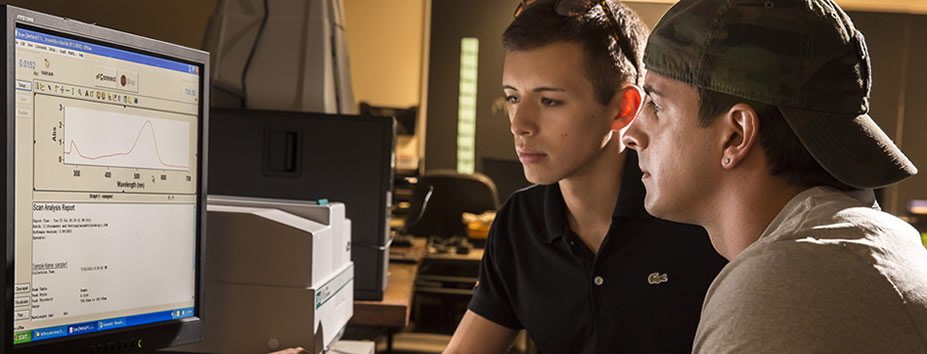SOAR Profile - Vincent Reed
Name: Vincent Reed
Major/minor: Environmental Science
Expected date of graduation: Spring 2014
Hometown: Winslow, N.J.
Project title: Anti-herbivore defense against leaf-cutter ants in myrmecophyte and non-myrmecophyte Cecropia trees in tropical premontane forests of Manu Park, Peru
Project advisor: John Bevington
Finding the motivation to conduct a SOAR project in summer 2013 came easy to Vincent Reed. That, of course, had much to do with the opportunity to research in what is widely considered “one of the world’s most diverse ecoregions” — the Amazon Rainforest.
While in Peru, Vincent worked alongside Alex Huynh ’14, examining the herbivore defense mechanisms in myrmecophyte and non-myrmecophyte Cecropia trees, studying how they defended themselves against leaf-cutter ants.
“By stepping outside the boundaries of the United States and a monotonous classroom, my exposure to a different climate, culture, and unique environmental and biological landscapes was a once in a lifetime opportunity,” Vincent explained.
Along the Alto Madre de Dios River in Manu Park, Peru, Vincent and Alex harvested various maturity stages of the three species of the Neotropical tree Cecropia: C. membranacea, C. polystachya and C. sciadophylla. In doing so, the partners then presented a sequence of mature and immature leaf disks of each species to an active foraging trail of leaf-cutter ants (one of the most important herbivores of the Neotropical forests). By examining the acceptability of each species and maturity level, the Moravian students hypothesized that the rate of acceptability would represent the levels of chemical defense invested by the plant; a function of both leaf age and biotic defense. By performing pick-up assays, cutting assays, and extracting anthocyanin compounds from the leaf tissue, the duo tested their hypothesis.
Through their pick-up assays — a test to observe chemical defense — the results indicated that mature leaf disks of all three species were taken by the leaf-cutter ants at a greater rate than immature leaf disks. This outcome was in accordance with the partners’ hypothesis due to their lack of chemical defense that would have deterred the leaf-cutters.
However, Vincent and Alex’s cutting assays — a test to observe physical defense by calculating the amount of area harvested by the leaf-cutter ants within 30 minutes — were in opposition of the duo’s pick-up assay results. Immature squares were harvested at a significantly higher rate than the corresponding mature squares.
Phenolic extractions of their leaf samples quantified the levels of defensive anthocyanin compounds present in the leaves. Mature leaves are tougher and more mechanically defended and thus do not need to invest as much energy into chemicals to protect it. Therefore, lower levels of anthocyanins were observed in both myrmecophytic individuals of C. membranacea and C. polystachya. The lone non-myrmecophyte, C. sciadophylla, showcased the highest level of anthoycyanins as its source of herbivore defense. However, these findings do not correlate with their pick-up assay. Vincent and Alex surmised that this result may infer that additional factors are acting independently of anthocyanin compounds that influence the disk acceptability by leaf-cutter ants.
While Vincent doesn’t plan to continue his research on the leaf-cutter ants and Cecropia trees, he sees potential for other student researchers to pick up where he left off.
Following his graduation in spring 2014, Vincent plans to continue his education, pursuing a master’s degree in atmospheric science.

